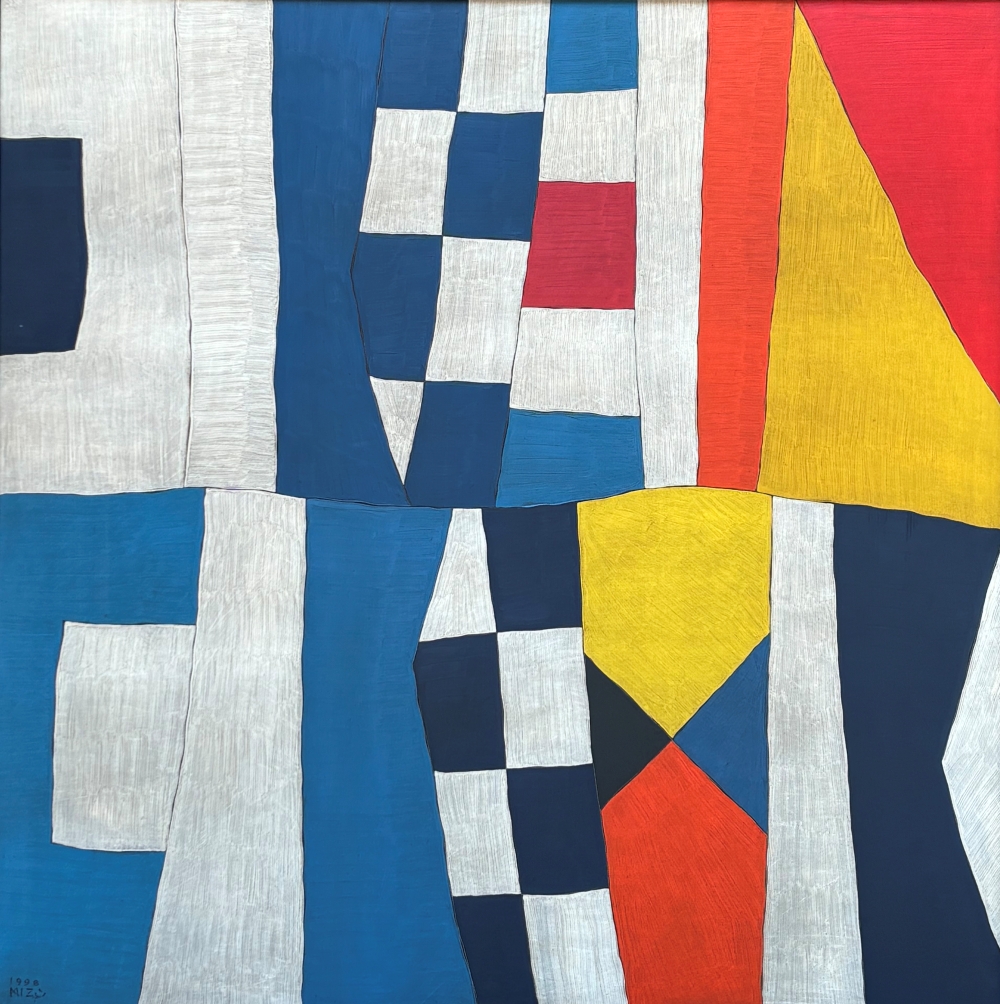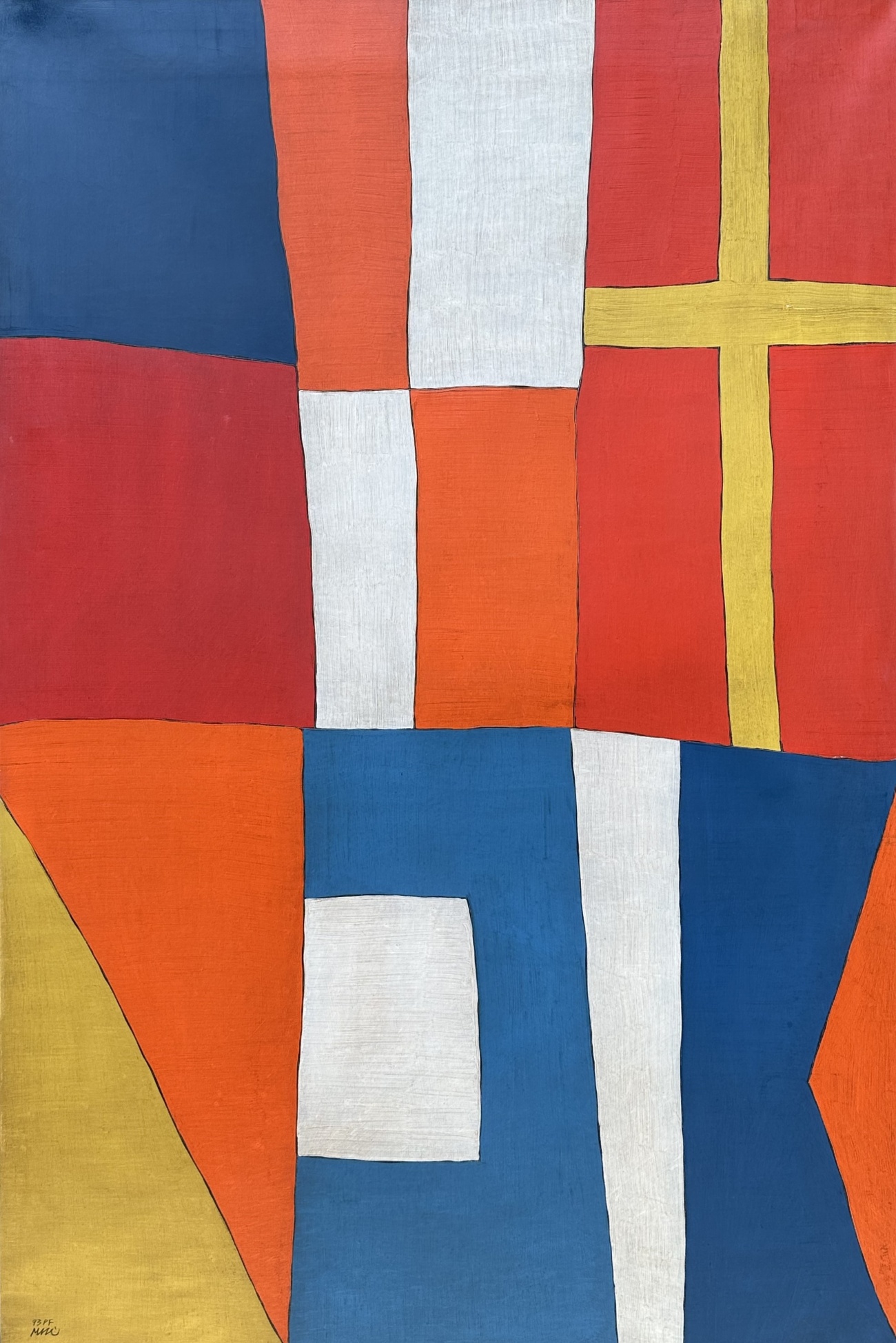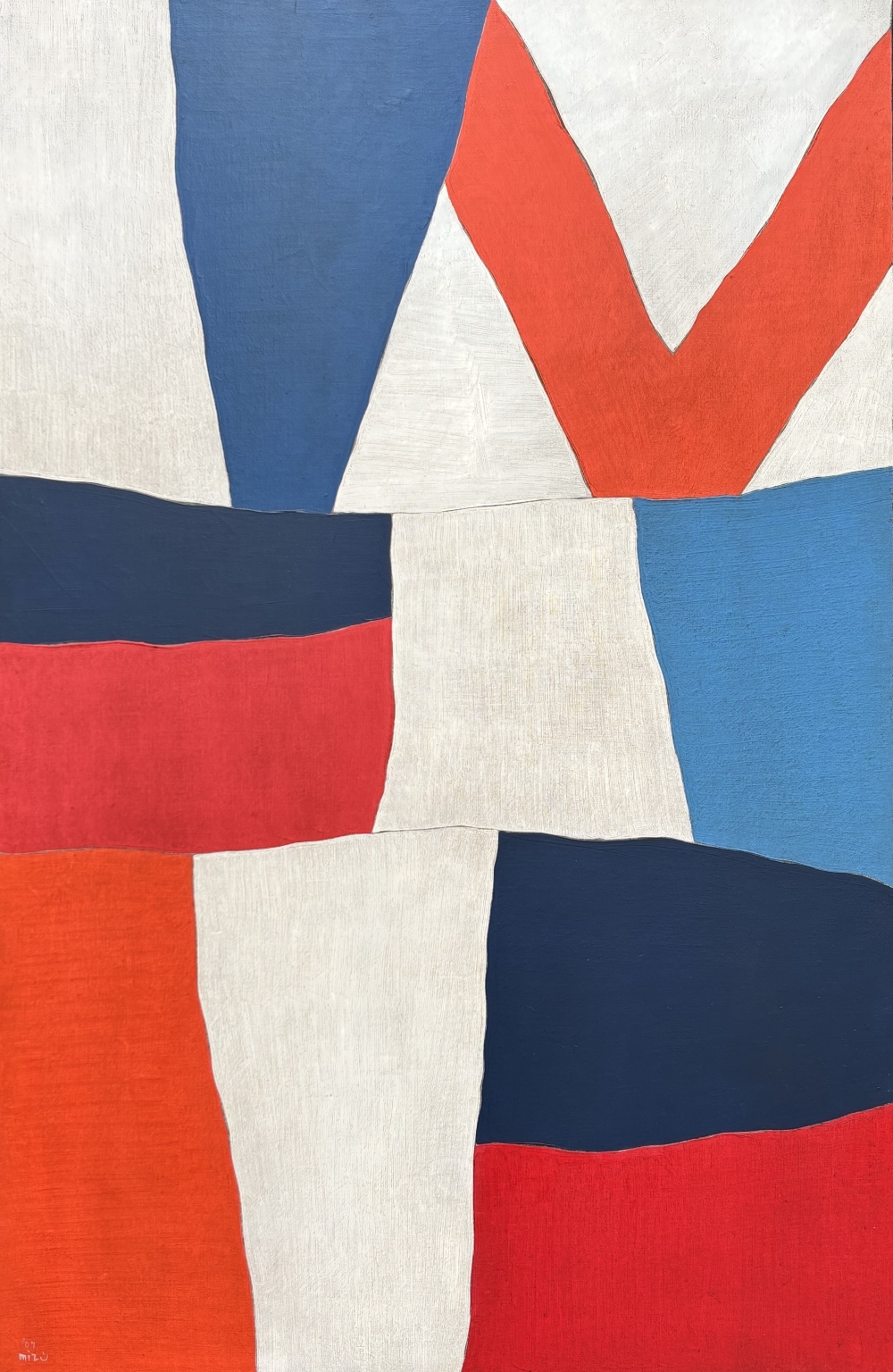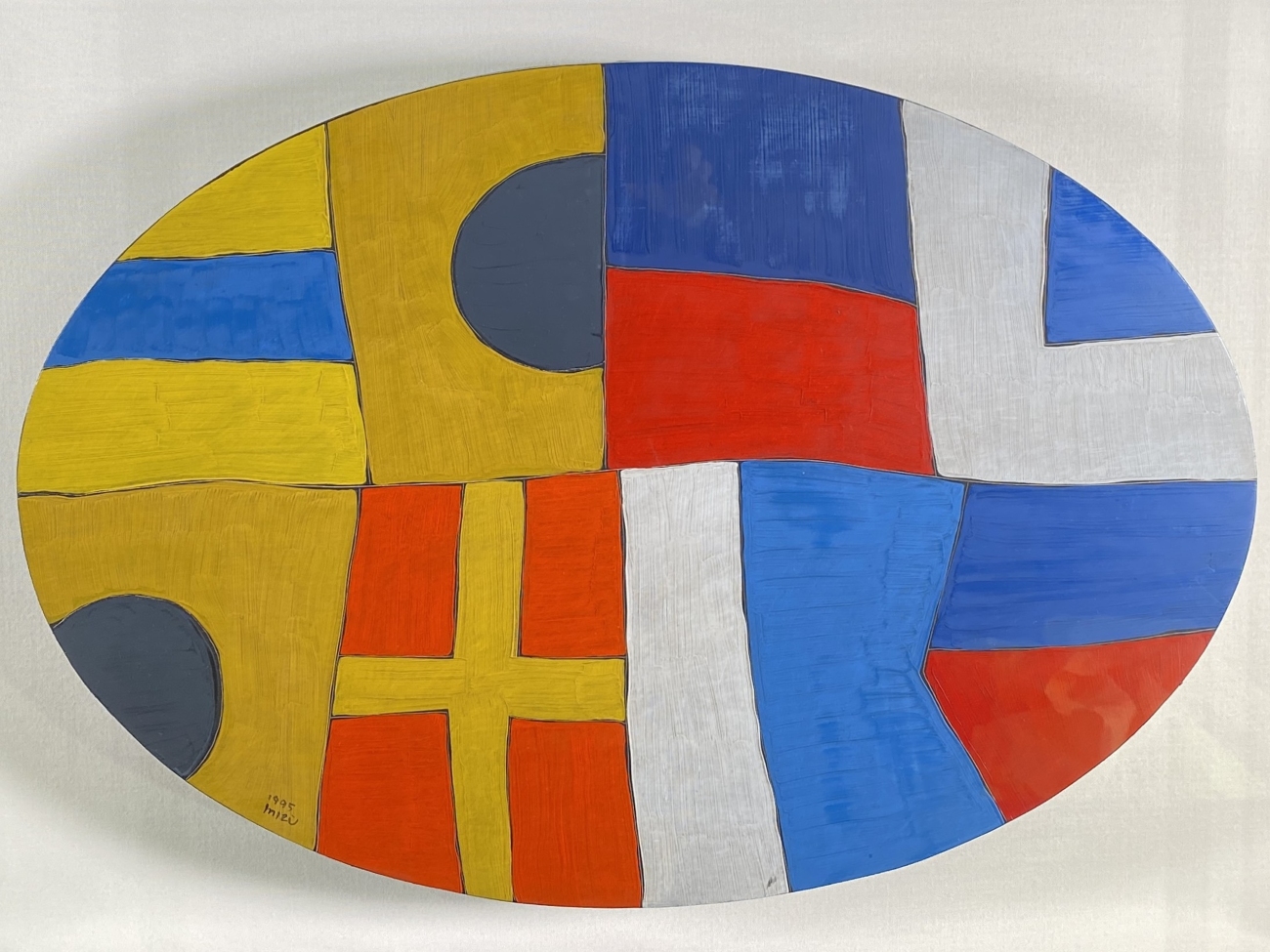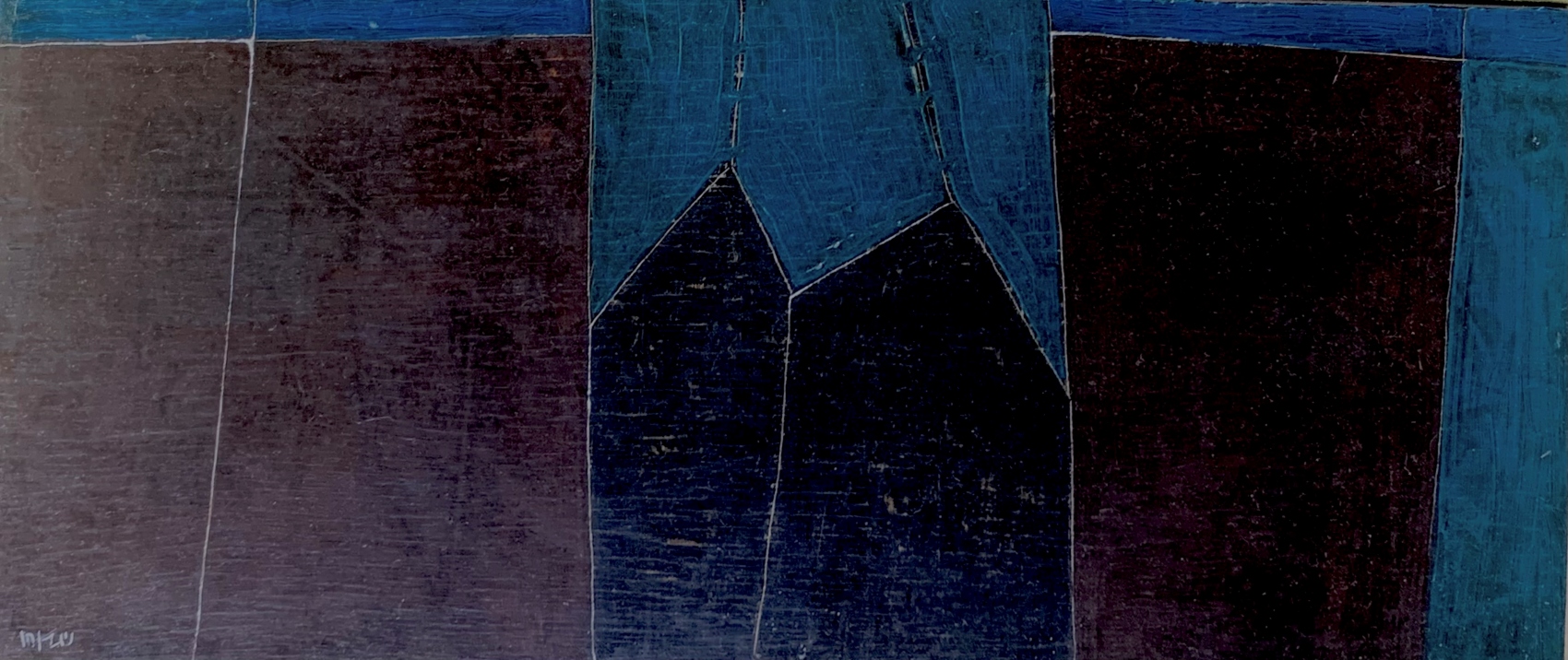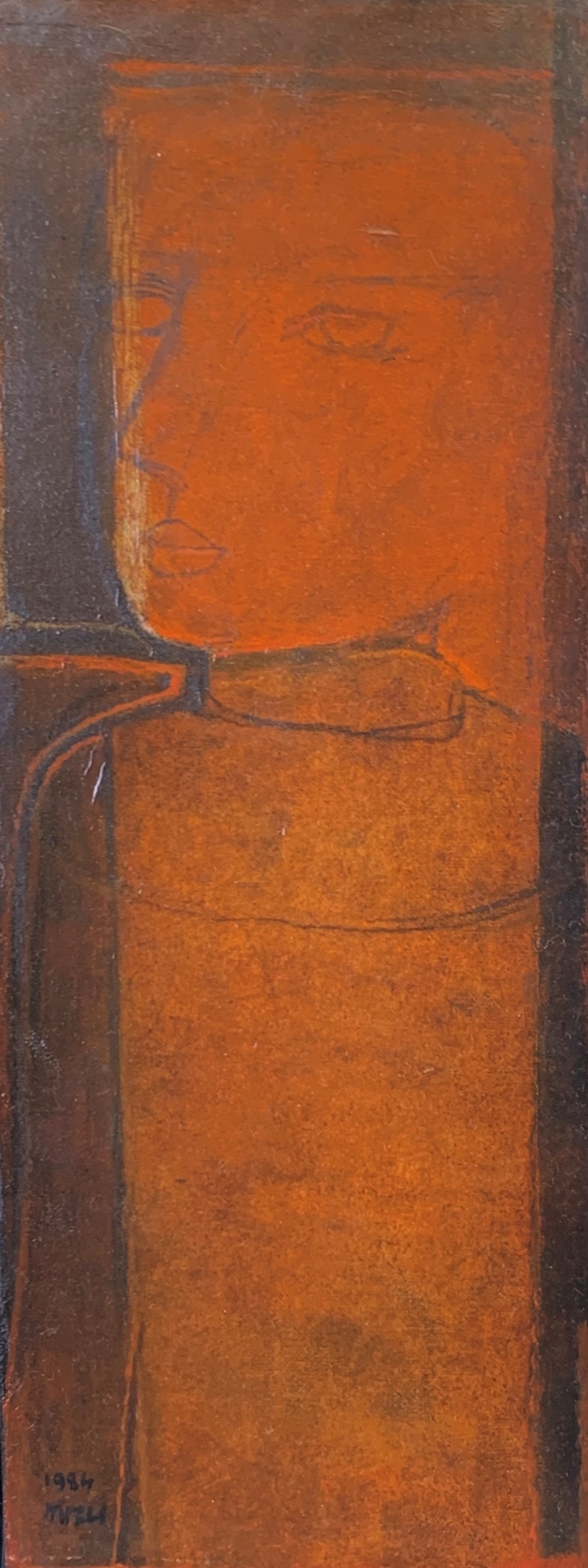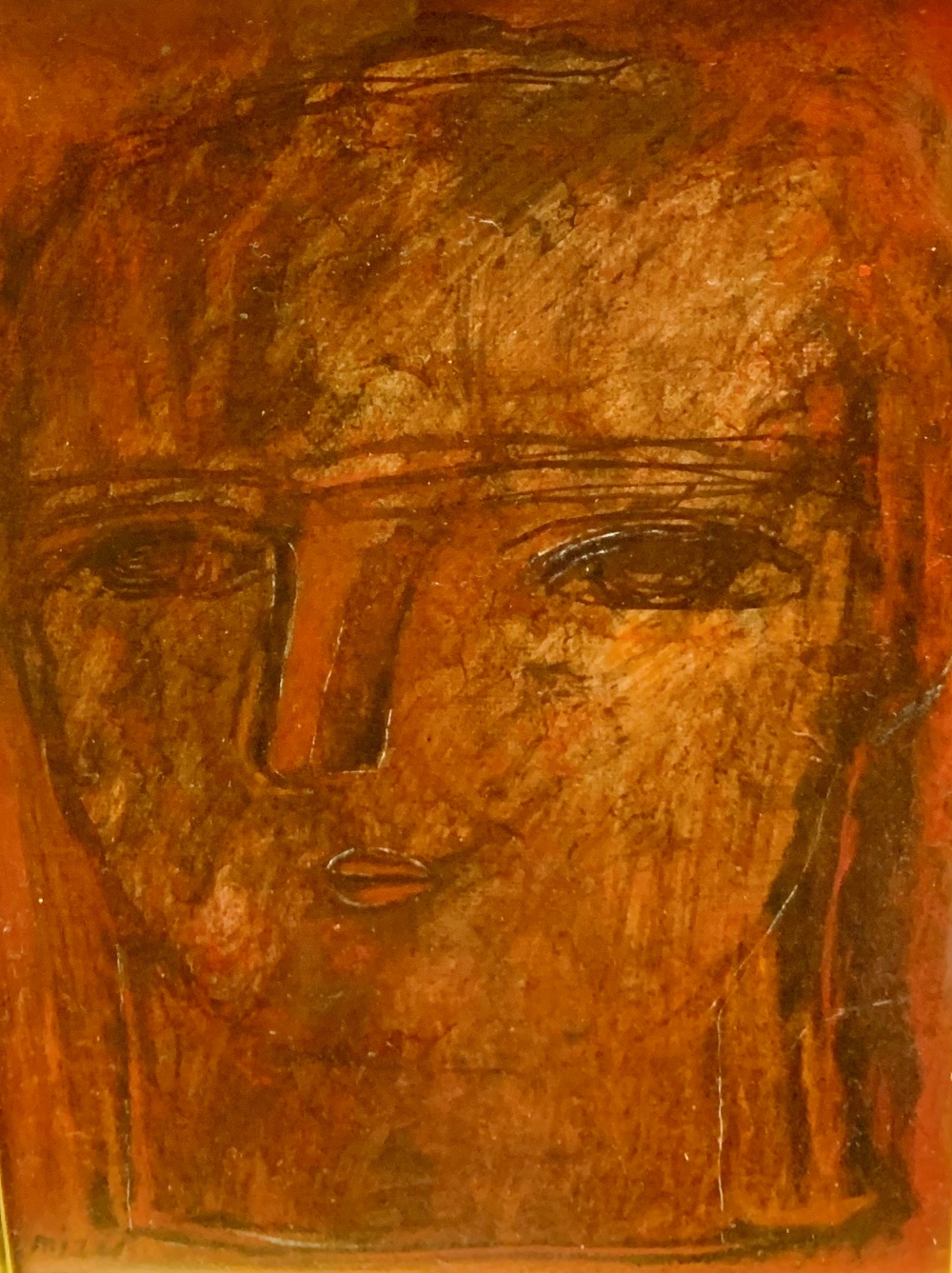Tetsuo Mizu
Japan
Mizu stole the spotlight in the 1980s with the Flag Series, in which the artist designs titles by combining international signal flags used for communications between cruising ships.
Mizu replaces the title symbols (alphabets) with national signal flags used among ships as a communication tool and rearrange them on the canvas based on his own philosophical interpretation to construct images. He first covers the entire canvas in black and then adds different colors on top to create rich, quiet shades on the surface. The distorted fine lines are somewhat reminiscent of the “distorted beauty” seen in Japanese pottery.
The artist lived in Italy, France, and Spain for many years and held exhibitions around the world. Notable exhibitions, such as “Picasso, Dali, Chagall, Mizu” (Barcelona, 1989) and “Dali & Mizu” (Beaune, France, 1990), demonstrate the level of popularity Mizu enjoyed in the Western art world. While being categorized as contemporary abstract, the matt and voluminous texture of his painting, segmented with fine lines, are likened to Ukiyo-e.

